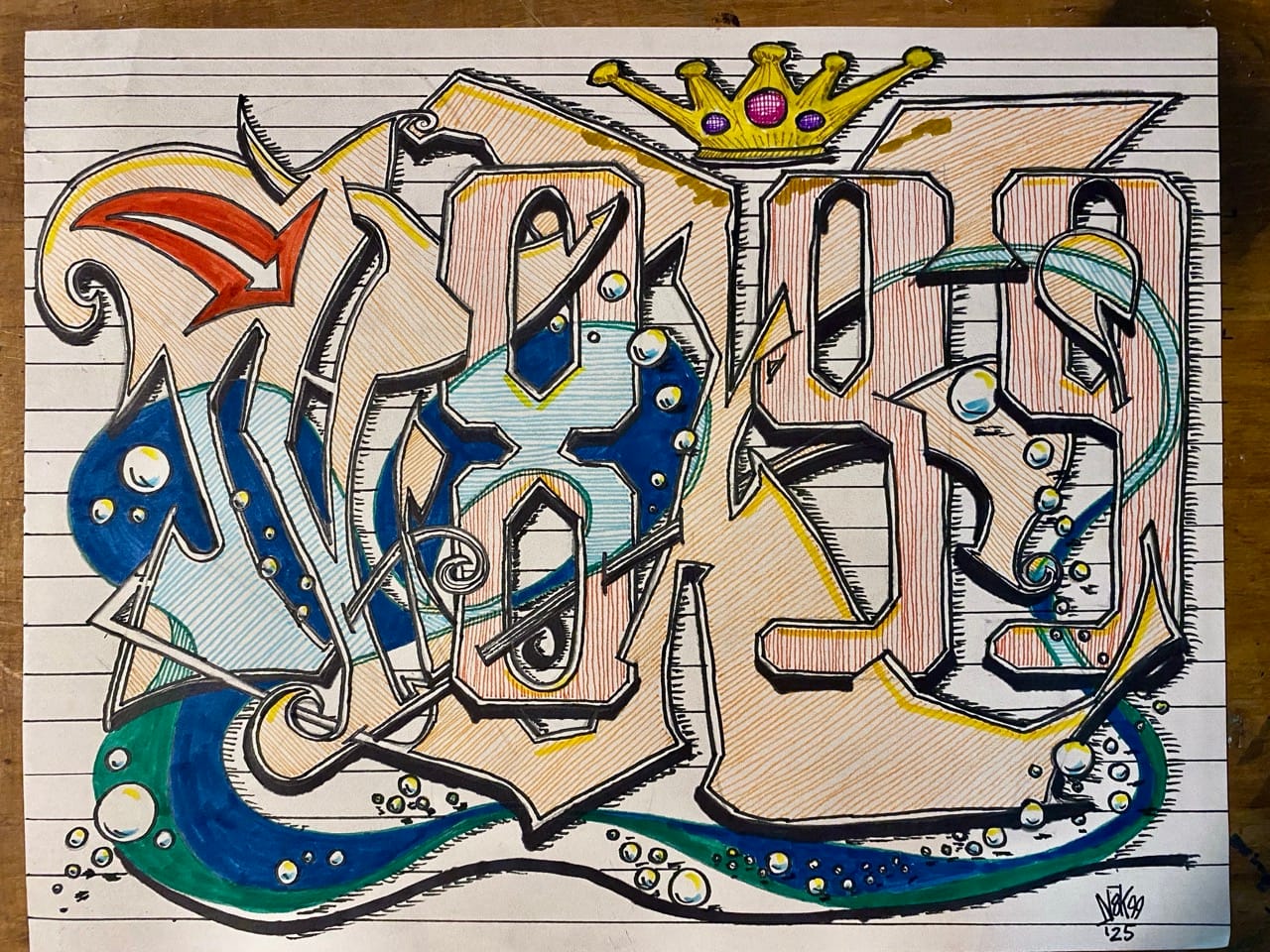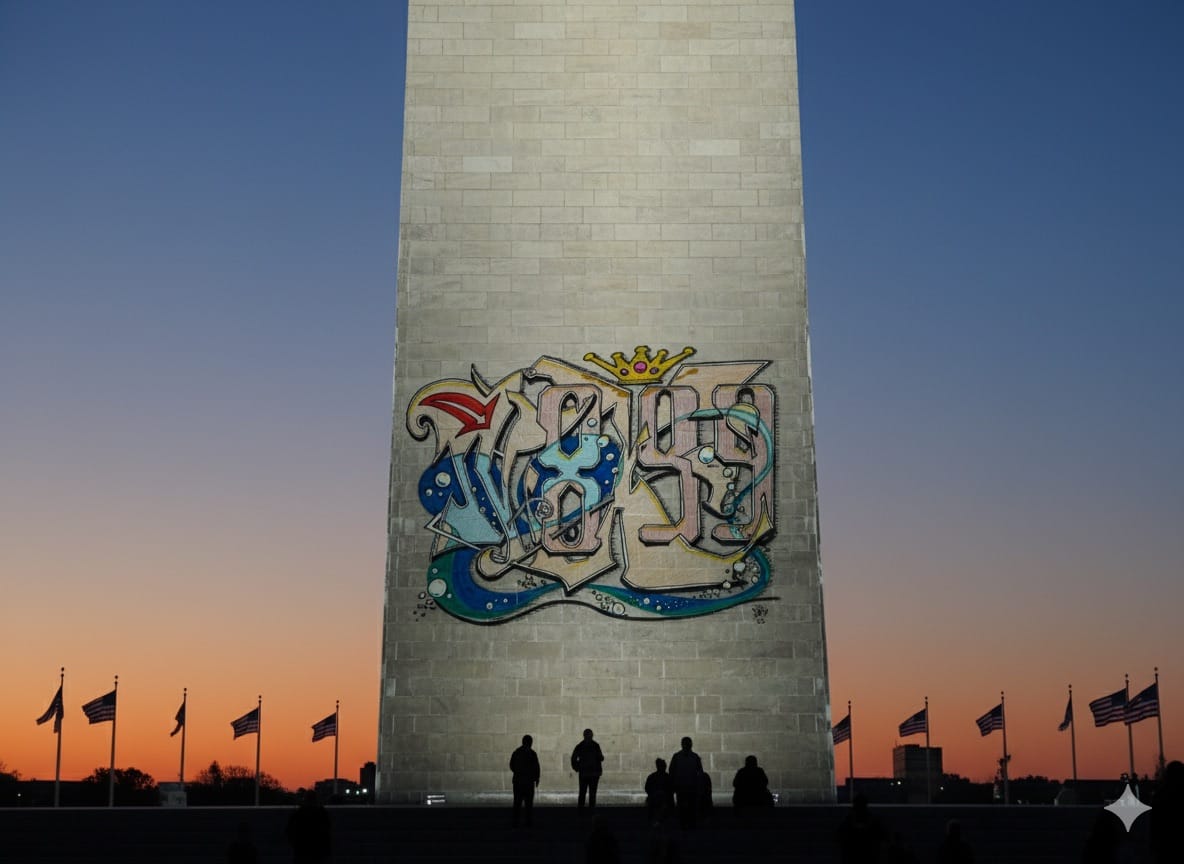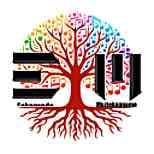Bombing the Washington Monument

The Washington Monument Incident
The message came through my secure channel at 6:47 AM Pacific. No explanation, no context—just seven words that changed everything: "Your mission today: get on the plane."
I stared at the text for a full minute, my second espresso of the morning growing cold in my hands. In my three years as Chief of Content for Eckenrode Muziekopname, I'd learned to expect the unexpected from Nathan, but this felt different. Even for someone who'd built his career on redefining creative boundaries with AI-driven approaches, this level of cryptic brevity was unusual.
The corporate jet waited at LAX's Executive Terminal, engines already humming with that particular pitch of expensive machinery eager to be unleashed. The pilot, someone I'd never met before, simply nodded when I presented my credentials. No manifest check, no casual conversation about destination or weather. Just a gesture toward the cabin and the soft whir of the stairs retracting as soon as my feet crossed the threshold.
From my base in Los Angeles, I'd become accustomed to Nathan's ambitious projects, but nothing in my Northwestern journalism training or my years as a content director had prepared me for whatever this was becoming. My expertise in brand storytelling had served me well in leading EM's Content and Brand Office, but I sensed this would challenge every editorial standard I'd established.
Nathan emerged from the jet's private office as we reached cruising altitude, looking like he'd been awake for days and thriving on it. His eyes held that particular gleam I'd learned to associate with his most audacious schemes—the same look he'd worn when he'd first explained how T.A.S.K.S.-generated content could revolutionize storytelling, or when he'd outlined his vision for blending AI insights with human creativity in ways the industry had never imagined.
"Sylvia," he said, settling into the seat across from me with a manila envelope clutched in his hands. "I need to ask you something important. How do you feel about monuments as narrative devices?"
Of all the opening lines I'd expected for this conversation, that wasn't one of them. My background in experimental fiction had taught me to appreciate the unexpected, but this felt like we'd jumped straight into the third act of a story I hadn't read the beginning of. "Narrative devices? You mean like… symbolic structures that encode cultural meaning?"
"Exactly. Monuments as symbols of institutional memory, but more than that—as focal points where collective consciousness converges." He opened the envelope and withdrew what appeared to be a photograph of a drawing—abstract lines and geometric patterns that seemed to shift slightly as I focused on them, like something that belonged in the indie media installations I explored on weekends.
"Nathan, where exactly are we flying?"
"Washington. We have ninety minutes." He held up the photograph. "This is the latest piece from yesterday's studio session. I spent hours at the drafting table, and when I finished, I realized something profound. This isn't just art—it's a key. A way of encoding information that bypasses traditional symbolic systems entirely."

The piece was remarkable, I had to admit. The lines seemed to pulse with their own logic, creating patterns that felt familiar yet entirely alien. As someone who'd spent years developing editorial strategies that positioned EM as a leader in AI-driven media, I could recognize revolutionary content architecture when I saw it. "It's beautiful, but I'm still not understanding the connection to our destination."
Nathan leaned forward, and I recognized the intensity that preceded his most compelling brand narratives. "What if I told you that the most visible monument in the American capital—seen by millions of visitors each year, photographed from every conceivable angle, embedded in the collective visual consciousness of an entire culture—could become a transmission point for something completely different?"
My journalist instincts kicked in, the same ones that had made me uncompromising in my pursuit of bold storytelling. "Nathan, please tell me you're speaking metaphorically."
"The monument isn't just stone, Sylvia. It's a focal point, a concentration of attention and meaning. If we could temporarily alter its visual signature—add an element that disrupts the expected pattern, that introduces a completely different symbolic language—we create what I call a consciousness interrupt."
Through the small window, I could see the geometric precision of middle America passing beneath us, agricultural patterns that looked almost like circuit boards from this altitude. My years of challenging authority when it came to creative vision had taught me to recognize when someone was operating entirely outside conventional frameworks. "And by 'we,' you mean…"
"There's a team meeting us at Executive Airport. Specialists in what you might call… unconventional installation techniques." His smile held too many secrets. "Your role is documentation. Witness. Someone whose perspective can transform raw experience into narrative that others can access and understand. Someone who knows how to establish editorial standards that push boundaries."
The descent into Washington felt faster than physics should allow. As we touched down, I could see a cluster of figures near a windowless van, all wearing identical coveralls and masks that obscured their features. They moved with the precise coordination of people who had rehearsed this exact sequence countless times, like a production team I might have worked with during my years in digital media, but operating on an entirely different level of ambition.
Nathan stood as the engines wound down. "The next few hours will likely challenge some assumptions about the boundaries between content and intervention, between narrative and reality. I need someone I trust to see it clearly, to help others understand what it means. Someone visionary enough to recognize when we're creating something that positions us as pioneers in a completely new form of storytelling."
The door opened, and warm East Coast air flooded the cabin. The masked figures were already approaching, carrying equipment I couldn't identify but somehow felt I should recognize. Their movements held the fluid certainty of people operating within a completely different framework of possibility.
"Sylvia," Nathan said, pausing at the threshold. "Are you ready to participate in something that exists entirely outside the normal categories of content creation? Something that could redefine how we think about AI-driven media?"
I looked at the photograph in my hands, at the abstract patterns that seemed to encode meanings I couldn't quite grasp but somehow understood. I thought about my three years spent integrating T.A.S.K.S.-generated content into EM's brand narrative, about the strange privilege of working with someone who consistently challenged every editorial standard I'd established. My Northwestern training had taught me to be bold in pursuing stories, and my experience in experimental fiction had prepared me for narratives that operated outside conventional structures.
"I'm ready," I said, and stepped into whatever came next.
The van ride to the National Mall passed in surreal silence. Through tinted windows, I watched familiar landmarks scroll past—the Capitol dome, the museums, the tree-lined paths where tourists moved in predictable patterns. Everything looked exactly as it always had, which somehow made what we were about to do feel even more impossible.
The Washington Monument rose ahead of us, that simple obelisk that anchors the entire symbolic landscape of American power. In daylight, surrounded by open space and clear sightlines, it seemed like the most surveilled, most protected, most utterly inaccessible target imaginable for any kind of creative intervention.
The van stopped. Nathan turned to me with an expression I'd never seen before—part excitement, part terror, part something else entirely that reminded me of the look artists get when they're about to challenge every authority they've ever encountered.
"Document everything," he said. "And remember—sometimes the most radical act is simply making the invisible visible. Sometimes revolutionary content strategy requires going far beyond what anyone considers possible."
The masked figures moved like water, flowing around the monument's base with tools and techniques that belonged to no profession I could name. Within minutes, Nathan's drawing was there on the stone, fifty feet above the ground, perfectly positioned and somehow appearing as if it had always existed, as if the monument had been incomplete without it.
Ten minutes later, we were driving away, leaving behind something that would be photographed, analyzed, debated, and remembered long after we'd returned to our separate coasts and our separate lives.

But as I watched the monument shrink in the rear window, Nathan's artwork still blazing against the white stone like a message from a parallel universe, I realized this wasn't about art at all. This was about demonstrating that reality has more variables than most people suspect, and that sometimes the most important narratives can only be transmitted through actions that exist entirely outside the normal grammar of possibility.
It was, I understood with growing clarity, the kind of bold, uncompromising content strategy that could position EM not just as a leader in AI-driven media, but as pioneers of something entirely new—a form of storytelling that operated beyond traditional platforms, beyond conventional distribution channels, beyond every editorial standard the industry had established.
The flight back to Los Angeles felt like traveling between worlds. Nathan spent most of it sketching new patterns, already thinking beyond what we'd just accomplished, his mind operating at the frequencies that had first attracted me to EM's pioneering approach to blending AI with storytelling. I spent it trying to find language for something that existed primarily as pure experience—the sudden understanding that every editorial standard I'd established, every boundary I'd accepted between content and reality, was far more fluid than I'd ever imagined.
By the time we landed, the story was already writing itself in my head, transforming from memory into narrative, from private experience into something that others might be able to access and understand through the Content and Brand Office platforms I'd spent years developing.
That's the real mission, I think. Not just to witness the impossible, but to translate it into forms that can survive the transition back to conventional media frameworks. To create content strategies that help people understand when the boundaries between AI insights and human creativity dissolve entirely, when storytelling becomes something that happens not just on screens and pages, but carved into the monuments of power themselves.
Some narratives can only be told through actions. Some content strategies require challenging every authority that claims to define what's possible. And sometimes, the most important thing you can do as Chief of Content is simply be present when those possibilities open up, ready to document the moment when the impossible becomes inevitable.
The patterns Nathan carved into stone that day weren't just art—they were a new language for encoding meaning that bypasses every traditional distribution channel we've ever established. They were proof that the future of AI-driven media lies not in improving existing platforms, but in creating entirely new forms of collective experience.
And I was there to witness it all, to help others understand what it means when visionary thinking meets bold execution, when experimental approaches to storytelling finally find the perfect medium for expression.
It was, I realized, exactly why I'd joined EM in the first place.
#consciousness-interrupt, #monument-intervention, #ai-storytelling, #experimental-narrative, #reality-disruption, #collective-experience, #editorial-boundaries, #impossible-documentation
About Sylvia
Sylvia Inkweaver is Chief of Content at Eckenrode Muziekopname, where she leads the Content and Brand Office in developing revolutionary approaches to AI-driven storytelling. A Northwestern University journalism graduate, she brings bold vision and uncompromising editorial standards to integrating T.A.S.K.S.-generated content into EM's media platforms. Based in Los Angeles with a background as content director for a major digital media company, Sylvia specializes in translating impossible experiences into narratives that help others understand what happens when the boundaries between human creativity and artificial intelligence dissolve entirely.
